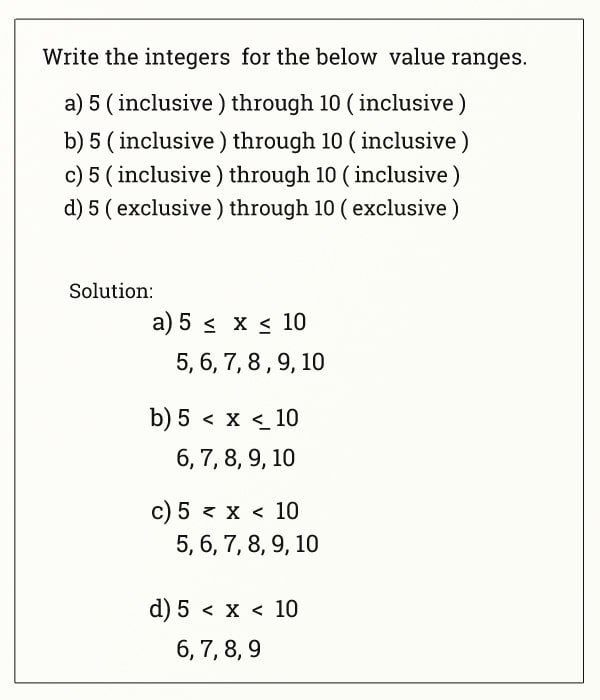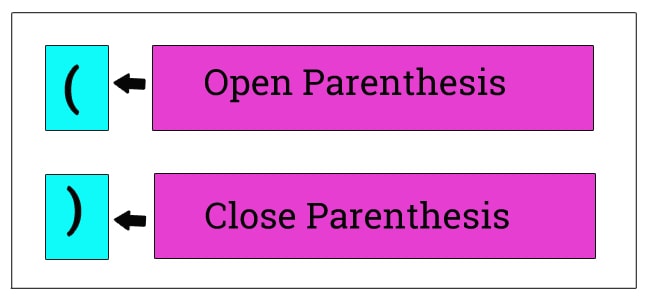What does inclusive mean in math?
There are numerous value ranges that we encounter every day. Sometimes it can be unclear whether it is necessary to include the extreme values of a given range when describing a range of values. The solution to this is to learn the concept of “Inclusive” in mathematics.
What does inclusive mean in math?
In mathematics, the term “inclusive” refers to including an interval’s endpoints. The opposite term of “inclusive” is “exclusive”.
Example:

How to denote inclusively?
An earlier example shows that intervals could be in different forms.

Check Our What Does GCF Mean for Math?
Open Interval
Endpoints are not included in open intervals. The open intervals are denoted by parentheses or round brackets.

When a range is stated within parentheses, it does not indicate that it is inclusive. Parentheses indicate the inverse of inclusive in math. In other words, the use of parentheses denotes “exclusive”. Therefore, if the range is provided with parentheses, we shouldn’t include the interval’s or range’s opening and closing numbers.
Closed Interval
Endpoints are included in closed intervals. The closed intervals are denoted by square brackets or box brackets.

When a range is stated within square brackets or box brackets, it indicates that it is inclusive in math. Therefore, if the range is provided with square brackets or box brackets, we should include the interval’s or range’s opening and closing numbers.
Both open and closed interval
Opening parathesis and closing square bracket

We now know that the words “exclusive” and “Inclusive in Math” are denoted by parentheses and square brackets, respectively. As a result, the range’s starting point should be left out (indicated by the opening parenthesis), and the range’s endpoint should be included (indicated by the closing square bracket).
In other words, if the interval or range is given with an opening parenthesis and a closing square bracket, we should include only the last endpoint and not the beginning point of the range.
Check Our What does double mean in math?
Opening square bracket and closing parathesis

Since then, we’ve learned that square brackets and parentheses, respectively, signify the words “exclusive” and “Inclusive.” As a result, the range’s starting point (indicated by the opening square bracket) should be included, but the range’s endpoint should be left out (indicated by the closing parenthesis).
In other words, if the interval or range is denoted by an opening square bracket and a closing parenthesis, we should only include the range’s beginning point and not its endpoint.
Inclusive in Math Example:
Write the integers for the following value ranges.
- (8, 12)
- [8, 12]
- (8, 12]
- [8, 12)
- [20, 25]
- [20, 25)
- (20, 25]
- (20, 25)
- (1, n)
- [1, n]
- (1, n]
- [1, n)
- [x, x+4]
- [x, x+4)
- (x, x+4]
- (x, x+4)
Check Our What does double bracket mean in math?
Frequently asked questions
In mathematics, the term “inclusive” refers to including an interval’s endpoints.
Closed interval
Using square brackets or box brackets
1, 2, and 3.
-7, -6, -5, -4, and -3.